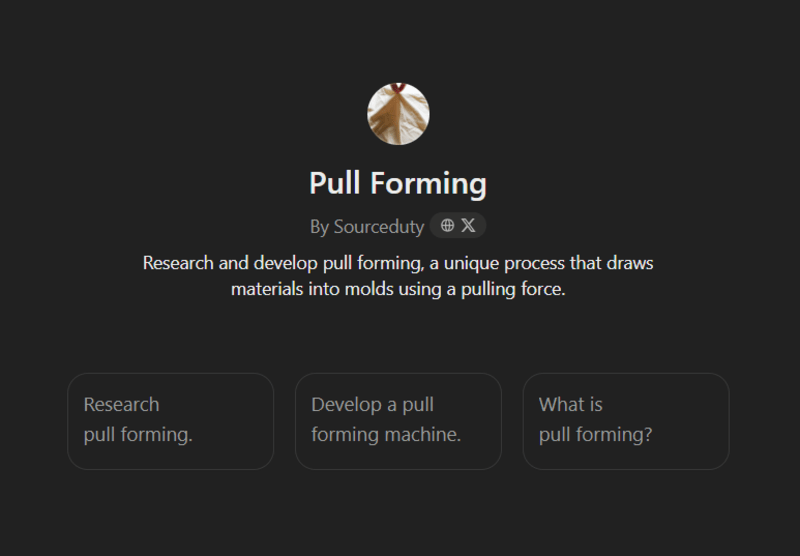The Pull Forming process is an innovative manufacturing technique that builds upon concepts similar to traditional blow molding but uses a pulling mechanism to shape materials into molds. The process involves feeding a malleable or flexible material, typically in sheet form, into a mold where it is then drawn across and into the mold cavity using a mechanical pulling system. This system applies tension to the material, causing it to stretch and conform to the intricate shape of the mold. Unlike traditional blow molding, which uses air pressure to force the material into place, Pull Forming relies on direct mechanical force to manipulate the material into the desired form. This enables the creation of parts with more precise geometries, reduced material waste, and a greater degree of control over the finished product. The method is particularly advantageous for materials such as metals, polymers, and composite sheets, offering potential applications in industries that demand both complex shapes and light weight, such as automotive and aerospace.
A significant advantage of Pull Forming lies in its ability to produce components with complex geometries and thin-walled structures while minimizing energy consumption and material wastage. The method can be particularly effective for parts requiring high precision but not necessarily the heavy internal pressures or extreme heat typically used in conventional molding processes. Because the material is simply stretched and pulled rather than compressed or inflated, it reduces the risks associated with material overstretching or breakdown, ensuring that the final product maintains structural integrity and material strength. Furthermore, Pull Forming is suitable for handling a wider range of materials, including those that may be sensitive to high temperatures or pressure variations, such as thermoplastic polymers or delicate metal alloys. This makes the process more versatile and applicable to industries that require varied material inputs, such as consumer electronics, automotive manufacturing, and packaging.
In practical applications, Pull Forming could revolutionize how manufacturers approach the production of lightweight, high-strength components. For example, in the automotive industry, this method could be used to fabricate body panels or structural components that are both lightweight and strong, reducing the overall weight of vehicles without sacrificing durability. Similarly, aerospace manufacturing could benefit from the ability to produce complex, lightweight parts that meet stringent regulatory standards for strength and reliability. Additionally, because the process requires less energy compared to other molding methods, it has the potential to offer environmental benefits by lowering production-related energy costs and reducing carbon footprints. The Pull Forming process thus represents a promising advancement in manufacturing technology, offering greater control, efficiency, and versatility for creating a wide range of products across various industries.
Like this entry?
-
About the Entrant
- Name:Alex Aldridge
- Type of entry:individual
- Software used for this entry:AI
- Patent status:none





